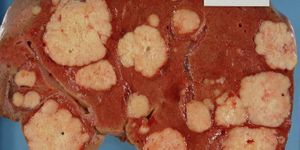Making Bone Marrow Transplants Safer with Antibodies
For some patients, bone marrow transplants are one of the few last defenses that could save their lives. But this procedure is extremely dangerous and prone to side-effects that could last a lifetime. Now researchers at the Harvard Medical School have developed a new way to transplant bone marrow that’s safer and more effective. Their work, though only done in mice, give hope that the technology could one day be applied safely to millions of people who are in desperate need of the life-saving procedure.

Before doctors can transplant healthy donor cells into a recipient patient, they must first wipe out the diseased blood cells from the patient’s bone marrow. This requires extremely toxic treatments that increase the risk for complications such as bleeding, infection, and organ damage. As such, finding a safer way to deliver this procedure is critical.
In order to get rid of diseased blood cells safely, researchers at Harvard turned to antibodies, which are inherently specific to their targets. "Instead of using non-targeted drugs that have lots of collateral damage we thought we could take advantage of the precision of the immune system, in particular, antibodies," said David Scadden, Professor of Medicine at Harvard University, and senior study author.
The team armed antibodies with a killing payload that’s specific to a blood marker known as CD45. "Antibodies are remarkably specific in what they target," said Rahul Palchaudhuri, the study’s first author. "We can direct them to CD45, a cell marker which is exclusively expressed in the blood system. That way we avoid toxicities to non-blood tissues."
In this approach, the antibodies can’t harm the thymus and bone marrow environments, which are crucial nurseries for T cells and innate immune cells. As a result, the body can still defend itself against infections that would otherwise be dangerously fatal if these cells were destroyed.
They tested their procedure in mice, and showed that mice with antibody treatment withstood infection better than mice treated with standard radiation. Antibody treatment also enabled mice to accept a bone marrow transplant, and be cured of their sickle cell anemia condition.
Interestingly, the team reported no severe adverse effects in mice given the antibody treatment, even if transplants didn’t follow. This means that the procedure won’t confine patients to a long, sterile hospital bed while they recover, and that a failed transplant won’t be fatal. But the caveat is that these results have only been observed in animal studies.
"If this approach works in humans, it will really change the conversation that providers have with patients," Scadden said. The procedure would open transplant possibilities especially for those "who have these underlying genetic disorders and for who the new gene-editing and gene therapy techniques are being developed."
Additional sources: Science Daily
Image credit: BD Bolen & Harvard Medical School









